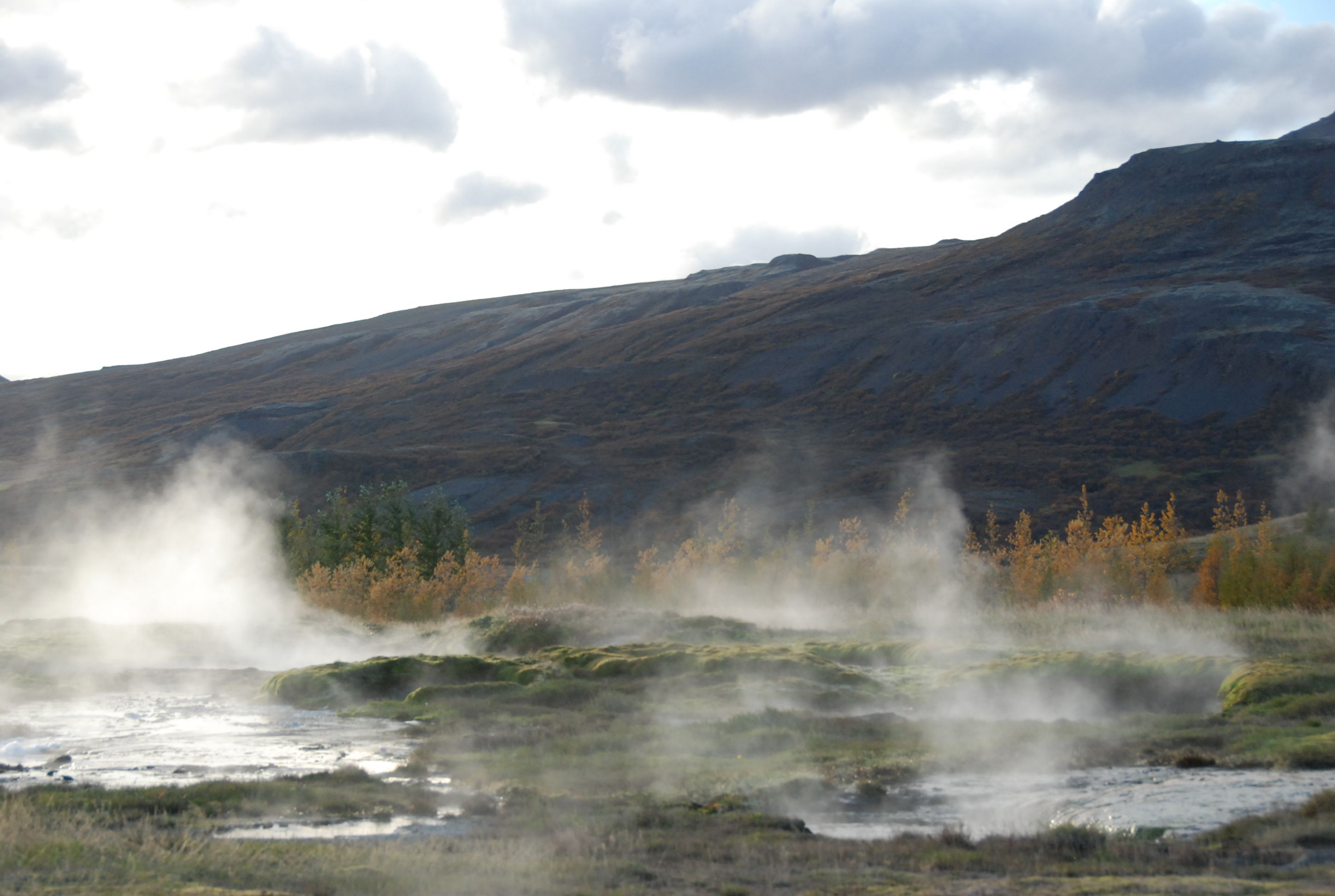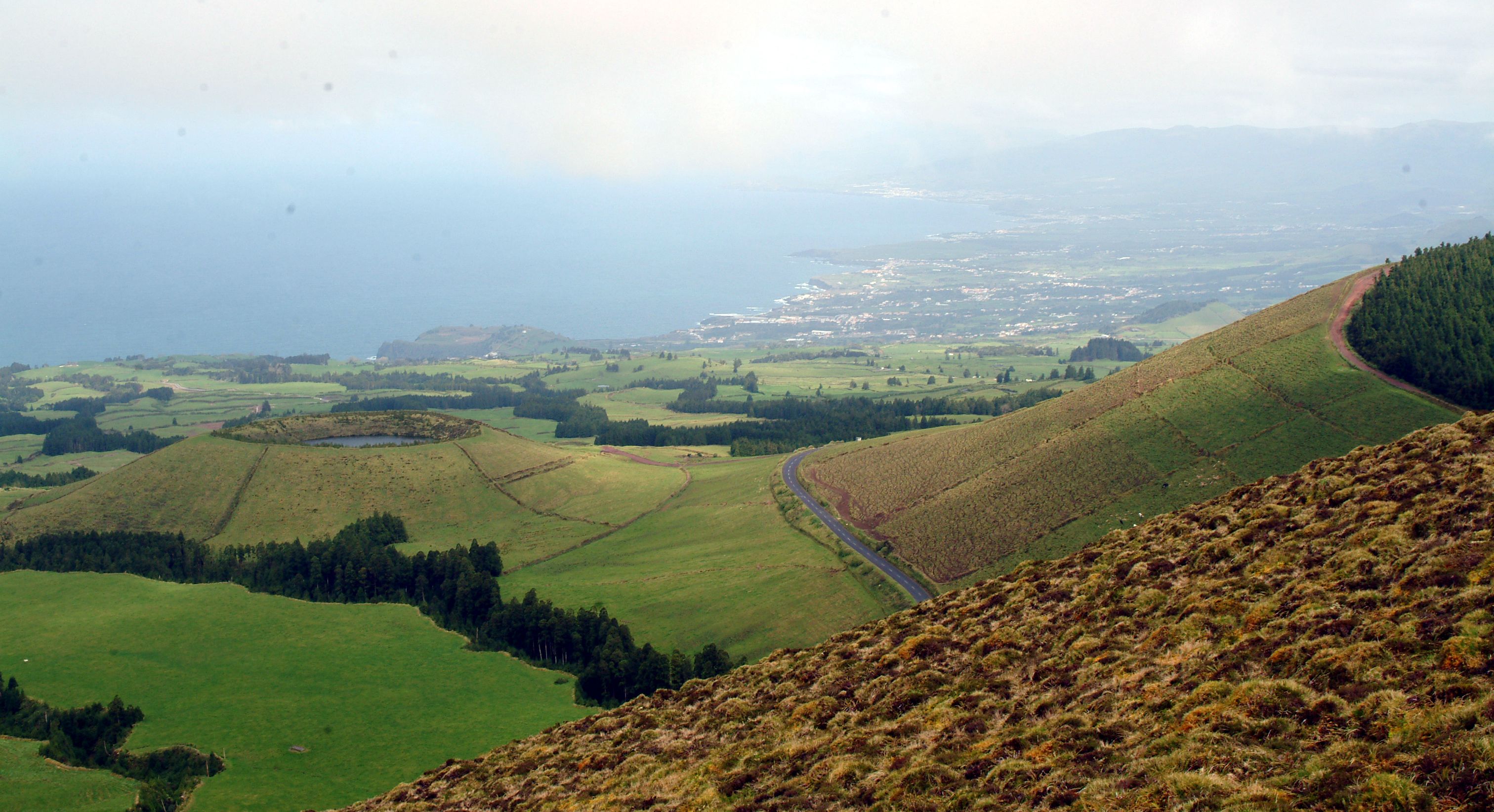The voyage to Greenland began on the island of São Miguel in the Azores, which actually is a mountain peak of the Mid-Atlantic Ridge.
Take a look at the map below. South America, North America, Europe, and Africa fit together like pieces of a puzzle. The reason is obvious – they actually were connected once.

The supercontinent Pangea
What today are separate continents were once part of a vast, continuous landmass that has been named Pangea. We know this not only because the shapes match, but also because rocks and landforms align, as do the fossil remains of the animal life that existed at that time.
Two hundred million years ago, Pangea began to break apart after having existed for 160 million years. It was the same forces within Earth’s glowing interior that had once joined the landmasses which eventually tore the C-shaped continent apart again.

The breakup began in the north, and what are today South America, Africa, India, Australia, and Antarctica separated 150–140 million years ago. The Norwegian Sea, between Greenland and Norway, was the last to open up, about 60–55 million years ago.
Twenty-five million years ago, what is now India collided with Asia. The “bulge” that resulted became the Himalayas. The Alps were also formed around this time, in much the same way.
The Mid-Atlantic ridge
The continents, which are in fact enormous plates of rock floating on the Earth's glowing interior, never stop moving. A rift is currently opening in East Africa, which will one day split this continent in two. The puzzle pieces on either side of the Atlantic Ocean are still drifting apart, at a rate of 2.5 centimeters per year.

Along this rift, the opening is constantly being refilled with glowing magma rising from the Earth’s interior. The magma poures out as lava, solidifies, and gradually builds what is the longest mountain range on the planet: the Mid-Atlantic Ridge. The mountain ridge stretches from Bouvet Island in the South Atlantic to the northeast of Greenland in the north.
Volcanoes
Most of the mountain range lies underwater, but in some places the lava has piled up so high that islands have formed. Statsraad Lehmkuhl has visited two of them during this expedition: Iceland and the Azores.
Jan Mayen in the north, Saint Peter and Paul Rocks near Brazil, and the islands of Ascension, Saint Helena, Tristan da Cunha, Gough Island, and Bouvet Island in the south are also mountain peaks of the Mid-Atlantic Ridge.
All these islands have volcanic origins, and several of the volcanoes remain active. The eruptions in Iceland in recent years are well known, and the Azores also host both active volcanoes and hot springs.
A unique habitat
One might think that no life could exist where the lava pours out from the seabed, but that is not the case. In 2003, researchers from the University of Bergen sent the submersible Ægir 2,300 meters down, between Jan Mayen and Svalbard.

The images revealed “chimneys,” where 320 °C hot and mineral-rich water gushed out. The researchers also discovered organisms that actually lived off the energy in the hot water, using the minerals in a process called chemosynthesis - in contrast to photosynthesis, which uses energy from sunlight.
Discovered in 1853
It was likely the puzzle-like shapes of the continents on each side of the Atlantic that inspired the geographer Abraham Ortelius in 1596 to suggest that the continents might be moving. The hypothesis that all continents had once been joined was presented by Alfred Wegener in 1912. It was also Wegener who gave the supercontinent the name Pangea, from the Greek words “pan” and “gaia,” meaning “all land.”
The Mid-Atlantic Ridge was discovered in 1853 when the USS Dolphin conducted depth soundings. But it was not until 1950 that scientists learned that a seismically active valley with mountains on either side had formed, leading to the confirmation of Wegener’s theory of continental drift.






